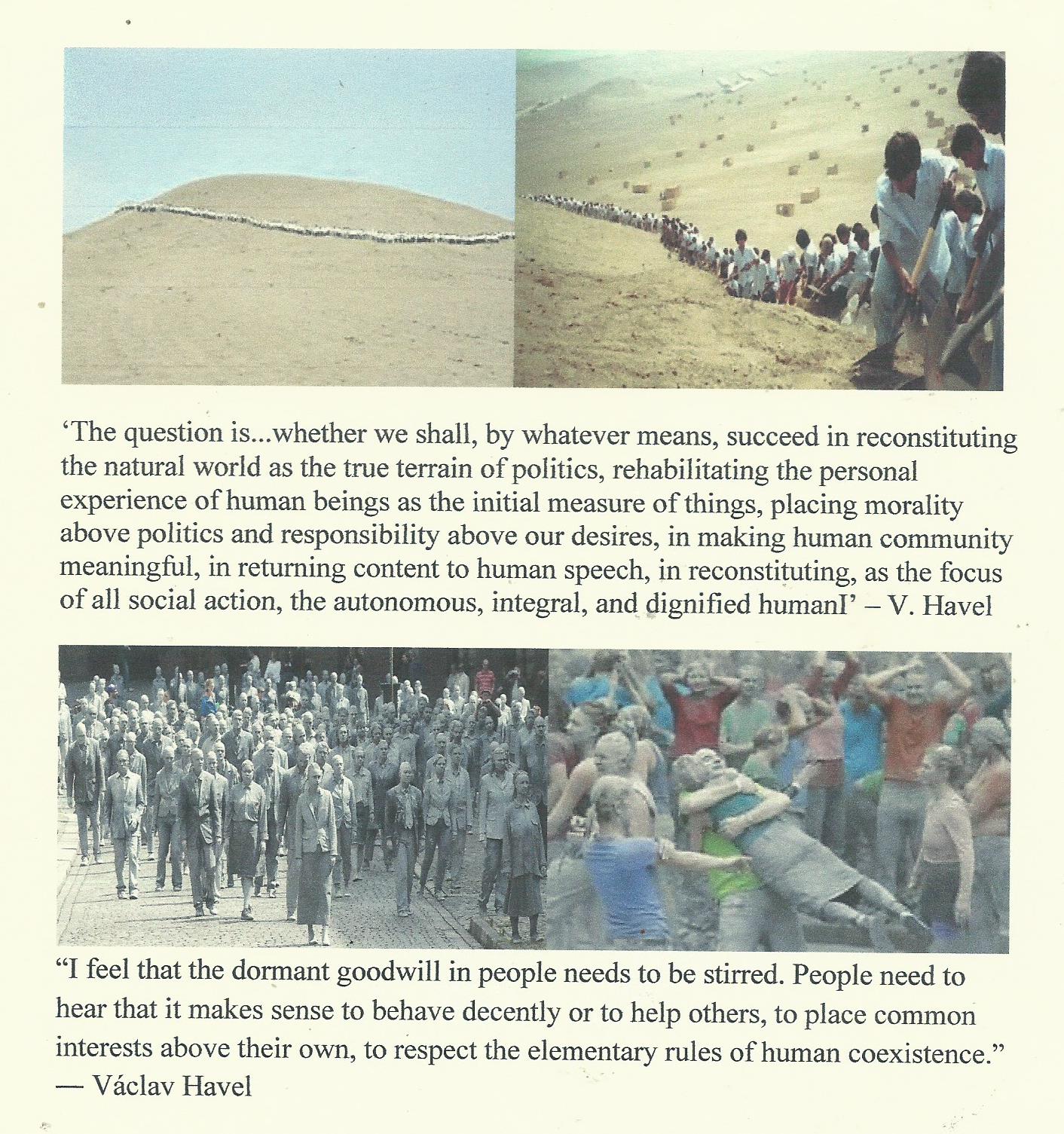 Mud, sand, creativity and connectivity (Λάσπη, άμμος, δημιουργικότητα και συννεκτικότητα)
Mud, sand, creativity and connectivity (Λάσπη, άμμος, δημιουργικότητα και συννεκτικότητα)
«Ένας άνθρωπος είναι μέρος του συνόλου, που αποκαλούμε « Σύμπαν ». ένα μέρος περιορισμένο σε χρόνο και χώρο. Βιώνει τον εαυτό του, τις σκέψεις και τα συναισθήματά του ως κάτι ξεχωριστό από τα υπόλοιπα – ένα είδος οπτικής ψευδαίσθησης της συνείδησής του. Αυτή η αυταπάτη είναι ένα είδος φυλακής για εμάς, περιορίζοντάς μας στις προσωπικές επιθυμίες και στην αγάπη μας για μερικά κοντινά άτομα. Το καθήκον μας πρέπει να είναι να απελευθερώσουμε τους εαυτούς μας από αυτή τη φυλακή, διευρύνοντας τον κύκλο συμπόνιας μας για να αγκαλιάσουμε όλα τα ζωντανά πλάσματα και ολόκληρη τη φύση με την ομορφιά της. Κανείς δεν είναι σε θέση να το επιτύχει εντελώς, αλλά η προσπάθεια για ένα τέτοιου είδους επιτεύγματα είναι, από μόνη της, μέρος της απελευθέρωσης και θεμέλιο για εσωτερική ασφάλεια». Albert Einstein
A few posts ago I referred to the 1000 Gestalten project that involved performance art and during which 1000 volunteers from all over Europe walked silently through the city of Hamburg covered in a mud like substance that gave them a grey almost lifeless uniform appearance. They seemed lost, voiceless and colorless. Gestalten means ‘shape, form or figure’ suggesting perhaps that these 1000 Gestalten were empty lifeless shells. They moved as if in a collective trance until someone ‘snapped’, and thus, began his transformation, and then another Gestalten ‘snapped’, until everyone had awakened. But in contrast to Plato’s released prisoner, in this scenario there is no fear, as each liberated Gestalt without hesitation turns to another Gestalt to help him/her re-gain his/her sight, colours and voice. They embrace each other, rejoice at their new found humanity and connect to each other as the mud is shed and a new sense of community is born, not held together by a mud type uniformity of apathy, but a community where individuals can be at one with themselves and with others. To me this art performance brings the utopia, a space of existing differently, in the here and now, and it allows us a glimpse of the alternative.
Another similar creative practice and symbolic act is Francis Alÿs’s work When Faith Moves Mountains (2002) at: (http://francisalys.com/when-faith-moves-mountains). The eight hundred volunteers who took part were invited to move a sand dune, and in the process they discovered what they never imagined they were capable of. Perhaps this too is a vision of the other spaces we can inhabit in the here and now, such as the space of collective action and collaboration and more agency. Utopia may not necessarily be a faraway place, but it may actually be a potentiality within our everyday lives. So ultimately, utopia may be about bringing up alternative ways of doing, being, thinking and relating in the present. The people that took part had changed by the end of the endeavor and a new memory of doing and being together had been created, a narrative that would be passed down to generations to come, a memory of ‘moving a mountain’ even if only by four inches. And I think that the fact that it was an experiential process made it all the more powerful in creating shifts in the volunteers’ way of thinking. Alÿs said: ‘I don’t know whether the dune actually did move, but something certainly happened in the four hours we dug at it under a leaden sky. The people climbed the hill and dug sand. Something happened that goes beyond one’s understanding; it was a small miracle. There was something symbolic and at the same time something very real about it’ (https://www.muhka.be/collections/artworks/w/item/3787-when-faith-moves-mountains-lima-peru-april-11-2002). It seems as if through this work the artist suggests that we have the ability to have an effect on the world, and even though art may not be able to bring about direct change, it can make us think of new possibilities.
